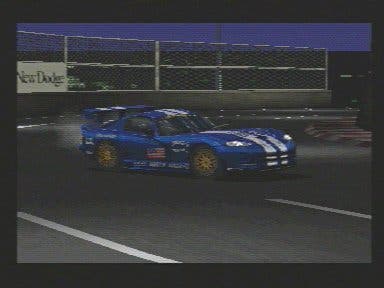Retrospective: Gran Turismo
Rear view.
When Jeremy Clarkson's great-great-grandson ponders the key automotive-related events of the late 20th/early 21st century, sighing wistfully while gazing upon a once-blue Earth as he whizzes silently in his fuel cell powered podcar through a Martian Google-built biosphere, he's likely to single out 23 December 1997 as a momentous date.
It wasn't the day Fiat produced a car with a set of electrics that remained fully functional for longer than it's taken you to read up to this point, or the moment Porsche suddenly realised it had been looking at its engineering blueprints back to front and thus been building the 911 with the engine at the wrong end. Rather, it marks the release of Gran Turismo for the PlayStation in Japan.
The background of the first Gran Turismo should be well known but briefly, for those asleep at the back, it goes something like this. Development by Polyphony Digital - then still Polys Entertainment - began in 1992 and would take the team of just seven half a decade to complete. Rather extreme by game development standards (Sony can't at least claim it didn't know what it was letting itself in for with the series) but not bad when you're accomplishing history. In its defence, the studio did also have to get a game ready for the Japanese PlayStation launch at the end of 1994 - Motor Toon Grand Prix - along with a sequel a couple of years later. Although neither title proved exceptional, they provided an opportunity to sample the handling model at the core of the GT series in its most primitive form.

Aside from a quick detour to play with robots and then motorbikes, Polyphony has gone on to do nothing but Gran Turismo, steadily refining the concept and pushing each iteration to new heights (while dragging Sony's financial directors' blood pressure along for the ride). So gradual has been the evolution that little has changed with regards to the essence of the GT games - if you've played any Gran Turismo, the content and structure of the series' originator will feel very familiar.
That makes it easy to easy to forget just how much impact the first Gran Turismo had when it rolled into retail. The series has been around so long, in fact, that there's a whole generation of gamers that will have missed its inception - all they've ever known is the post-GT era and they'll no doubt find it hard to realise what all the fuss was about. But as the best-selling PS title ever, with overall sales of 11 million, GT caused something of a phenomenon within the gaming community and beyond - Nissan UK felt it necessary to write to gaming mags attributing the vast increase in the general public's awareness of its Skyline GT-R model to the game's massive popularity, for instance.

Ultimately, it came down to content. GT's 170-odd licensed cars made a mockery of every driving game released up to that point (even if most appear to be made up of variants of the Mazda MX-5, Nissans Silvia and Skyline, and Subaru Impreza), while its graphics provided the then most realistic depiction of four-wheeled awesomeness (as you'd expect, perhaps, given the team's privileged insight into accurately estimating the power of PlayStation). Supporting the realism was then the most detailed and convincing handling model to have graced a console title, with intricate real-world dynamics such as weight transfer, suspension response, and understeer/oversteer characteristics expertly conveyed via exquisite use of the DualShock's rumble function.
Weld the whole lot together, throw in an almost overwhelming tuning system bolted onto a hefty RPG-like structure, and a selection of delicately designed tracks, then wrap it up with the most cinematic replay system seen at the time - and the result ended up rather magnificent. Players would systematically finish a race and then sit through the playback of their performance, admiring the unprecedented visuals and authentic physics at work.
But to fully explain Gran Turismo's astronomical success, we need to look at the bigger picture. The timing coincided with developers becoming increasingly au fait with leaving 2D gaming behind, and with driving games - as is so often the case with new generation of hardware - very much at the forefront of this polygonal transition. Efforts such as V-Rally and, subsequently, TOCA Touring Car Championship signalled the arrival of technically advanced, reality-based driving experiences on console. By the time GT turned up, the road it sped away on was pretty well paved.




